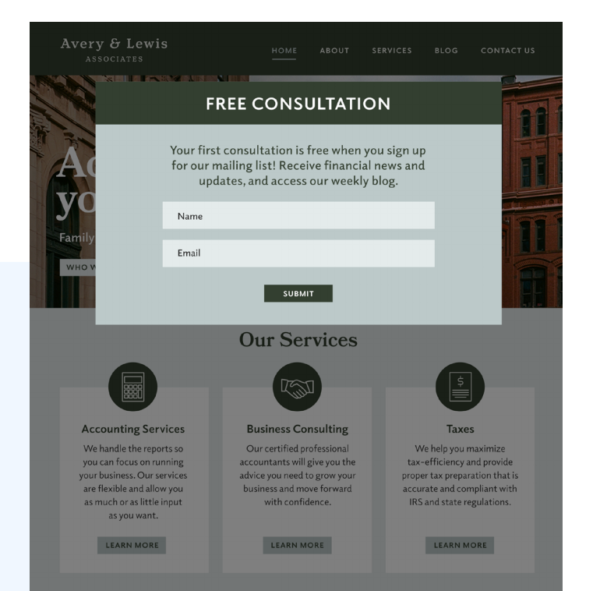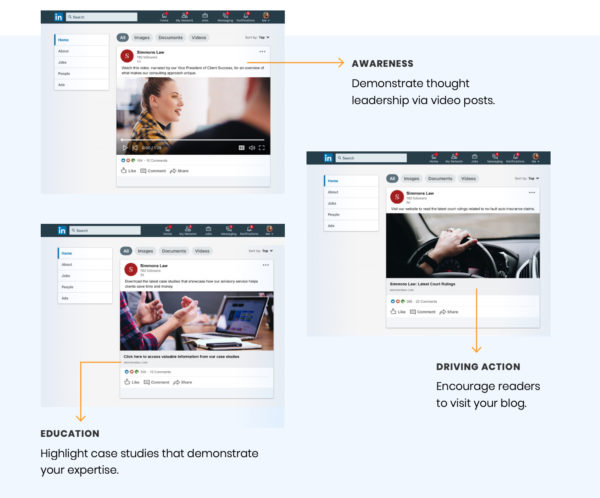
Consulting is a rewarding career choice. You get to work with clients to solve tough problems, gain exposure to different sides of your industry, and develop a valuable set of transferable skills that ensure your business keeps growing.
From finance to HR, strategy to IT, the consulting market is also increasing in value year over year, offering up your choice of high-paying clients — if you know how to attract them.
How to get consulting clients fast?
- Offer referrals.
- Guest blog.
- Show up in their inbox.
- Go social.
- Target (and retarget) new leads.
- Network off-screen.
- Be ready to wow with your pitch.
But before you put these tools to work, you’ve got to hone-in on what you do best.
Define your niche
You may want to offer a wide range of services with the hopes of appealing to a greater audience. But this path makes it more difficult to showcase your talent, obscuring from clients why you’re the right person for a specific job.
Establishing your niche — or your unique selling proposition — caters to a demanding market that’s after specialists. In the clients’ eyes, this niche makes you more:
- Credible. It shows that you have experience solving their exact problem.
- Memorable. For example, marketing generalists are a dime a dozen, but a millennial SEO expert is easier to recall — and hire — when the need arises.
- Referable. Niche expertise makes you the go-to person within your customers’ networks for that specialty.
How to get clients for your consulting business
Your specialty niche helps identify your target customers. Knowing who they are, where they spend time, and how they make purchasing decisions makes it easier to maintain these strategic marketing efforts — and ensure that you’re speaking to the right people.
Offer referrals
People trust their peers’ recommendations, a behavior called social proof. It’s based on the assumption that others know more than we do about a situation. If something’s worked well for someone in our circle, we’re more likely to mimic their actions.
The easiest way to build this social proof is to ask your clients to speak on your behalf. Get up to 80% closing rates from new customer referrals by:
- Offering small commissions on referrals that convert.
- Creating a referral contest.
- Rewarding referees and new customers with upgraded products or services.
- Partnering with other professionals whose client base sometimes needs your expertise.
Incentivizing referrals also drives loyalty among those making them. By voicing their support of your business, clients confirm their commitment to you — and the reciprocity you offer drives this loop of loyalty.
Make sure to remind clients about your referral program periodically, and especially at the close of projects. This is the perfect opportunity for you to continue a conversation over email, reminding a client what you accomplished for them and encouraging their referral.
Guest blog
Once you’ve set your specialty niche, it’s time to get out there and establish yourself as the expert. Building out your online professional portfolio is an excellent place to start, but its value relies on potential customers actually finding it.
Improve these chances by striking a presence where your audience spends time. A great way to do this is by writing a guest blog related to — and promoting — your specialty.
How to find consulting clients with blog posts:
- Answer common questions or problems clients encounter.
- Put together a short tutorial or how-to guide.
- Offer details on lessons learned, common misconceptions, or what not to do.
- Explain your views on industry trends.
- Review your experience with a specific tool or service and how it’s benefited your clients.
You can reach out to former or current clients and offer to post on their company blog or try pitching online trade magazines relevant to your work.
If you can write your content for a more general audience, you could even blog for a local newspaper or lifestyle site. For example, if you’re a financial consultant, listing your top suggestions for families to improve their personal finances helps establish your expertise.
Email marketing
As you’re working to gain a greater presence among your potential client base, don’t overlook their inboxes. Direct email marketing is one of the most effective marketing channels, generating impressive returns of about $38 per dollar spent.
Email marketing works because you can:
- Personalize emails, incentivizing more engagement than social media or ads.
- Deliver emails strategically, as a part of a series or to wherever someone is in the sales process.
- Automate your whole strategy, like triggering an email based on user activity with Constant Contact’s email marketing tool.

Get social
Every social media channel has its marketing advantages, but LinkedIn is where business relationships thrive. According to the platform, four out of five people on LinkedIn drive business decisions, making it a powerful lead-generation tool if you use it right.
To win with LinkedIn, you should:
- Position yourself. Make sure your defined niche is clear so you’re speaking to the most relevant audience.
- Optimize your profile. Include your portfolio of work, quantifiable experience with specifics of your most prized outcomes, professional headshot, and customized URL.
- Ask for recommendations. These reinforce your business’s social proof digitally.
- Join groups. Be an active part of industry conversation, aligning your name with your expertise.
- Post content frequently. This could include links to your guest posts, content from your own blog, or articles you think your audience would find interesting.

Target new clients
While strategies like content marketing and direct email communication are excellent for building new leads, they take time to develop and grow.
Targeted advertising can help bridge this gap, capturing potential leads and pointing them to your website, portfolio, and content. This additional traffic boosts your online activity’s organic growth and gives you an avenue to add more subscribers to your email list.
Online advertising strategies start with keyword research, helping you identify search volume and trends for specific words and phrases you think your clients would use in a search. This step keeps you from choosing words that are too competitive or general — where your message gets lost in the clutter — and instead helps you find localized and audience-specific search terms that are more cost-effective.
Ad campaigns you can get started with quickly include:
- Pay-per-click ads through Google Ads, where you bid on a keyword and pay only when someone clicks on your ad, directing them to your website.
- Promoted posts and sponsored stories on platforms like LinkedIn or other social media channels.
- Retargeting ads that market to individuals based on their online activity, like if they’ve visited your website or blog post.
There are also free or cheap advertising opportunities, like:
- Business or industry-focused directories specific to your niche.
- General directories like Best of the Web or Spoke.com.
- Local listings like Google My Business, Yelp, and Local.com.
- Chamber of commerce and Better Business Bureau directories.
Network
Ultimately, your audience exists in real life — so you need to be there, too. Face-to-face interactions are more memorable than their digital counterparts, and forging these relationships expands your network to huge new audiences.
Get out from behind the screen at:
- Industry conferences and trade shows.
- Local business, alumni, or professional association events.
- Chamber of commerce meetings.
- Fundraisers.
- Interest-based MeetUps.
- Speaking engagements.
Nail your elevator pitch
No matter what strategy you use, the goal is to bring in a new lead. You’ve got to be prepared to continue the conversation. Your pitch needs to concisely and clearly explain your unique selling proposition in about 30 seconds — whether you’re delivering it in person or in writing.
When pitching a prospective client, make sure to:
- Address their specific problem.
- Explain your solution with examples of how or why it works.
- Intrigue with results a client can expect.
- Set expectations for timing and client commitments.
This pitch should end with a brief call to action that teases your full proposal, in which you hammer out the finer details like the scope of work, deliverables, timeline, and client fees.
Bring it all together
While it takes some legwork to set up your marketing strategies, many can run on their own once you’ve got the ball rolling and then pick up steam over time. It’s all about communicating smarter to help people find you and using the tools that amplify your voice.
Need more guidance? Check out our consulting services marketing guide, The Download, for more advice, examples, and inspiration to land more consulting clients.




